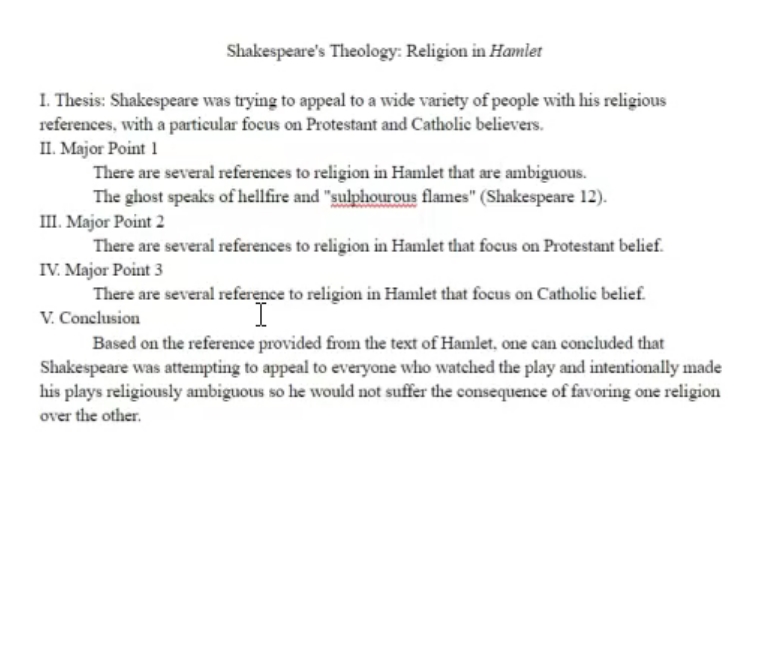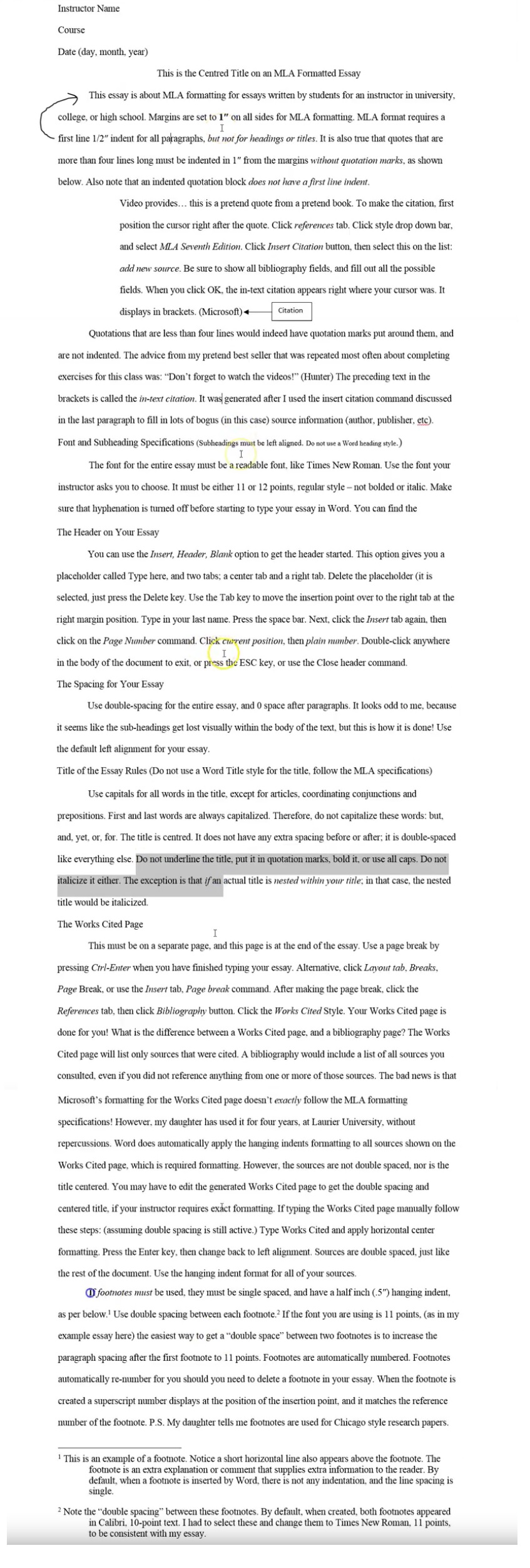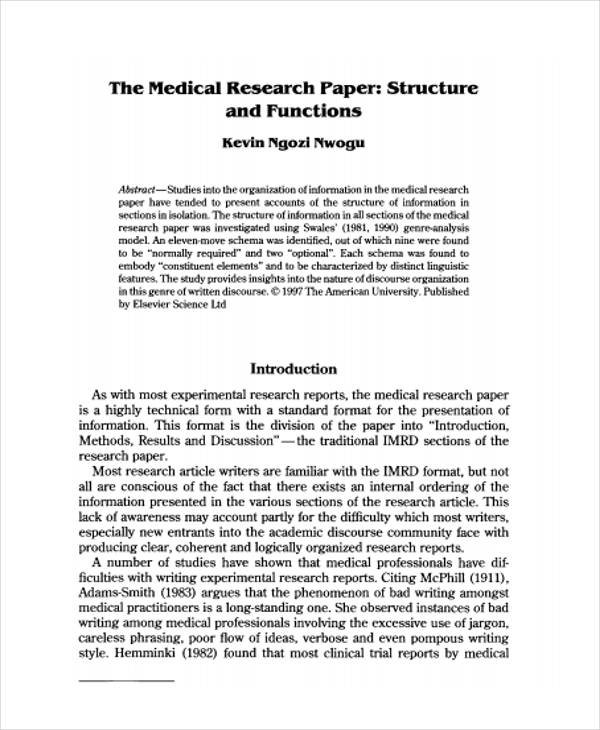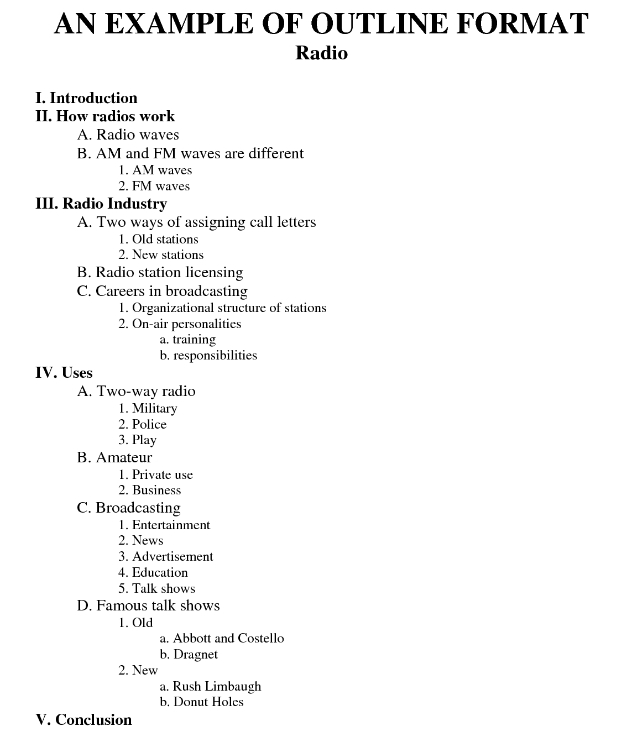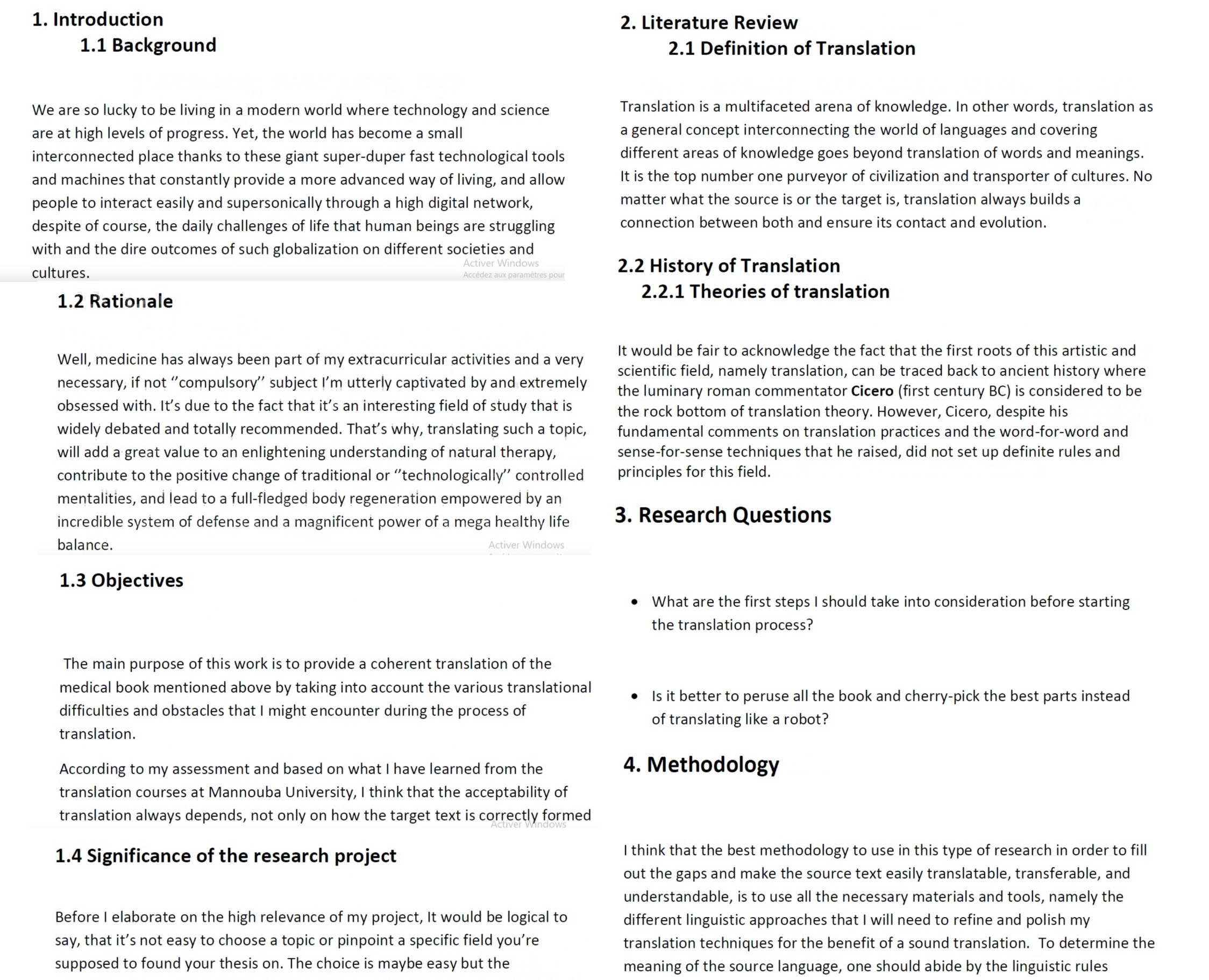How to Write an Outline for a Research Paper: The Full Guide for Students
You’ll probably never go hiking or sightseeing in a new city without a map and a plan for your trip downloaded into your phone (at least sketchy ones). This small step will ensure that you do not get lost and see the key places of the city, and so will have a fruitful and fun day. This idea describes, in a nutshell, the point about an outline for research paper: it keeps your writing organized far in advance. It is a framework of your paper, main walls and beams that will get decorated in the drafting process.
Research projects are about accuracy and preciseness, and so an outline will help you build a research paper that is concise, contains the most relevant arguments, provides evidence and facts but does not drift away in some unexpected direction.
Fine, but how to write an outline for a research paper? By doing research and putting your findings together according to a pattern. Let’s continue with the full guide created for you by MyPapersDone experts.
What is Research Paper Outline?
Basically, research paper outline is a plan, or rather a fill-in form that builds a first rough draft of your paper (this is why in class you have probably filled in printouts with lots of fields like a thesis, first argument, second argument, evidence, objection, and so on). It is actually a very useful activity and skill since it really teaches you what goes after what.
Is an outline for research paper any different than the plan for other projects? Not that much. To begin with, what is a research paper? It is an academic assignment that teaches students to find information, evaluate sources, then pick the necessary information, put it together coherently and logically, and then draw conclusions. It means that you need to take a stand or describe a view on the matter and support it with good evidence. If it resembles an argumentative paper, do not get confused. A research paper may be also an argumentative paper if it strongly defends a position (like with certain controversial issues). But even if you just take an issue and take it carefully apart, show evidence, and then make some predictions or recommendations, it is still a solid and good research writing. With a good plan, of course.
For example, you need to write about global warming. First, you find a good article that defines this phenomenon, describes its features and consequences, and then you find more scholarly articles about specific signs of global warming, like accounts of rising seas, temperatures, more floods and droughts, extinction of some species and fast spreading of others. You can introduce an interview, a documentary, a report from some reputable environmental organization. Everything goes as long as it is scholarly, and not some shady website that cites no sources but throws plenty of emotions into the text.
What should be in the introduction of a research paper?
Any paper begins with an introduction, and so does the plan. The introduction may seem intimidating but the trick is to write it after completing the body of the paper. In this case, you need to state a thesis, grab readers’ attention, give background (some of it), name the author of a source or a book you will discuss, and you’ve done it! Maybe you can say why you research it, but this is often optional and gets explained in the body paragraphs. Mind that intros, like conclusions, should be brief and the main highlight should be placed on the body. So save the most impressive and interesting facts for the middle part.
If fit into a list, the intro branches will look like this:
- Paper Title (depends on the format)
- Attention catcher (a so-called hook)
- Some background/basic information
- Thesis
- Optional: roadmap of the paper
Sample Outline Format of Research Paper
What’s next? Next goes the paper itself. Since we are dealing with a research paper outline, it is reasonable to show it schematically. This is a frame into which you can safely fit your topic and evidence, and be sure that you’ve done it right.
It has three main parts and several auxiliaries that cannot be skipped, however.
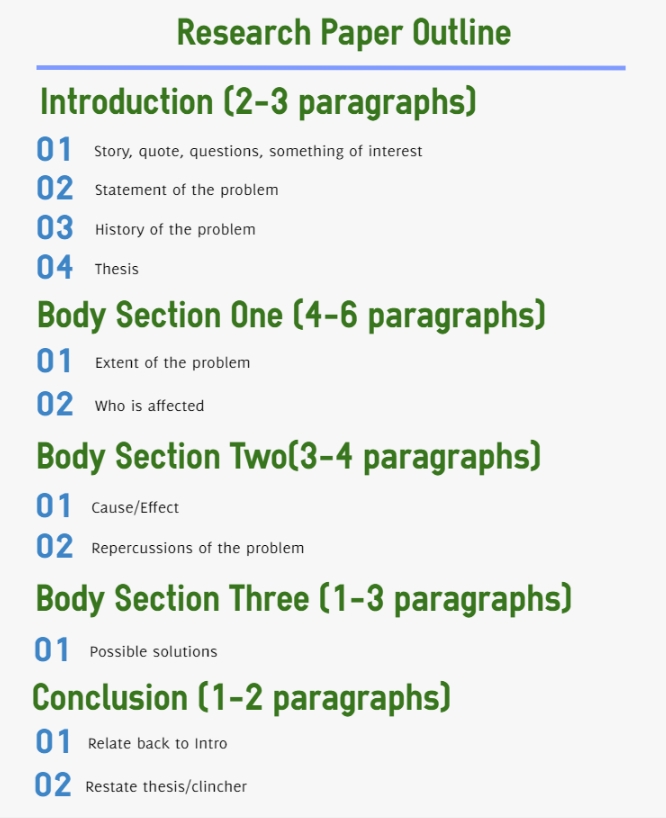
• Title page
• Introduction
- Hook
- Define the audience
- Thesis statement
• Body
- An argument to support the thesis
• Conclusion
- Summary of arguments.
- Call to Action
• Bibliography
• Appendix
Title page and appendices are optional and depend on the instructions you were given, but the rest is obligatory. Pay special attention to a bibliography. You need to mention the sources used, and you need to mention them properly. You may skip a title page, or provide only a couple of sentences of the intro and conclusion, but a bibliography must be there.
APA Style
Now that we’ve clarified what is to be written, we need to find out how it should be written. Formats define how you will cite the sources (this is a key difference) and how you will add page numbers, subheadings, how you will put together a title page, and whether you will have an abstract or an executive summary as a part of the paper.
APA is one of the most widely used formats popular in natural as well as social sciences. It is similar to equally popular MLA (of which later), but different in some aspects. It includes a separate title page, an abstract as an obligatory part and has its particulars for in-text citing. The outline of a paper in APA will look like this:
1. Cover page
2. Abstract (about half a page)
3. Introduction
a. Hook
b. 2-3 sentences of background
c. Thesis
d. Roadmap (optional)
4. Body of the paper. Includes paragraphs with topic sentences. Basically, it features in each paragraph:
a. Claim
b. Evidence
c. Explanation
d. Discussion; or it has individual paragraphs for:
e. Methods used
f. Findings
g. Their discussion.
5. Conclusion
6. References
7. Appendices (optional)
MLA Style
MLA style is preferred for humanities, arts and similar subjects. It is fast and easy in formatting and so is applied when it is content, not form, that really matters. This format does not require cover page or abstract, but it requires proving a page when you cite some course, so be sure to note pages when you pick ideas for citing. If shown in a list form, the MLA paper outline will look like the following:
1. Header flushed left (YMCA, as professors present it mnemonically to students: your name (student), my name (prof.), course and number, age (date))
2. Title of the paper
3. Introduction
a. Hook
b. 2-3 sentences of background
c. Thesis
4. Body of the paper. Includes paragraphs with topic sentences. Basically, it features in each paragraph:
a. Claim
b. Evidence
c. Explanation
d. Discussion
5. Conclusion
6. References
7. Appendices (optional)
In details you can explore it in this video, it is really great for highlighting main points and showing them to you.
This formatting looks informal and easier, but take care to conform to requirements for sources listing. This is an important part of MLA format.
A research paper outline: step-by-step guide
Title Page
If required by the format (APA needs a cover page), then provide it. It is very brief, about 4 lines in total. But pay attention to a title itself. It is a part of the paper, so wait till you complete your research to find a better name for it. The title should preferably fit into one line, be interesting, and reflect the issue. Try googling it before you use the title, but if you like what you have created and feel that it fits properly, do and use it.
Below the title you will write:
- your full name,
- (names of team members),
- university or college name,
- submission date.
Remember to include page numbering (upper right corner) and running head (upper left corner).
Introduction
The introduction is often overlooked as a part of a paper and given little attention. Yet it is not a viable approach. An effective introduction catches a reader and makes them read on, or persuades the professor that you know the ropes of the matter and will deliver a good body of the paper and a conclusion. To make a good introduction, observe several simple rules.
– Provide a hook. It may not be the best gag or elegant metaphor, but please, do not start your paper blandly. If that is statistics, let it be the most impressive and significant (and provide an explanation of why it matters as well). If it is a statement, make it paradoxical or surprising. Just do not make it boring.
– Find your audience. Ideally, your audience is interested in what you say and so you keep it in mind. But usually it happens vice versa: you have to persuade people that they should be interested and care. You convert people to your audience. So while writing keeps in mind that not all are experts, but you want these people to get interested and excited, too. So do not write too many technicalities and do a bit more explaining, even if it seems obvious to you.
– Thesis. Your claim or viewpoint – and why it is like this. For example technology is great because …. (insert 2-3 key points) but it also has such drawbacks as (1-2 points). This is the backbone of your paper, so stick to it while writing.
Body
In brief, the framework of the paper will look like this:
1. Listing of background facts and assumptions.
2. Evidence, evidence, examples.
3. Discussion. Introduction of alternative views.
4. Recommendations or prognosis.
How does this sample look in reality?
1. Technology has facilitated many tasks for us and made our lives more convenient.
a. Communication
b. Transportation
c. Medicine
d. Entertainment
e. Artificial intelligence
2. However, technology has its negative sides.
a. Makes people dependent on it
b. Resources are depleted for manufacturing
c. Pollution
d. Use of energy
e. Making people more stupid and lazy?
3. Should we abandon it altogether?
a. Everything has its measure, and when used within some limits, technology is safe. But we need to set these limits, both to use and to manufacturing.
4. Recommendation: consider how to reduce the negative impact of technology, because benefits of technology make human life better, and banning it will push us backward in development significantly.
Conclusion
Recap what you say, do not bring in new information, tell readers what should be done about the issue. That’s all, in a nutshell. In other words, remind of the thesis, name one or two strongest arguments, and ask readers to remember, consider something or change their habits a bit. It will be remembered even if all your arguments will be completely forgotten. This is how human memory works.
Research Paper Outline Examples:
Well, it is seemingly clear that we have covered key steps of writing a research paper outline and you can safely sit down to writing your own. But actually, no. The best way to understand how something works is to see it work. Thus we have selected several good plans for research papers in different areas of study. We encourage you to read, analyze, note interesting moves and ideas and apply them to your case. They are absolutely free, so download them and use as mindmaps on your path to creating research.
Samples
Conclusion
We believe that you are now fully equipped to face the task of planning a paper and writing an accurate and interesting research project. But should it be so that you still cannot do it, we at Mypapersdone.com are always here at your disposal. We can create all types of step-by-step paper plans and then ultimately complete the papers according to them. So whenever you need it done fast and in good quality, just let us know and get the best services that will bring you the best grades!
